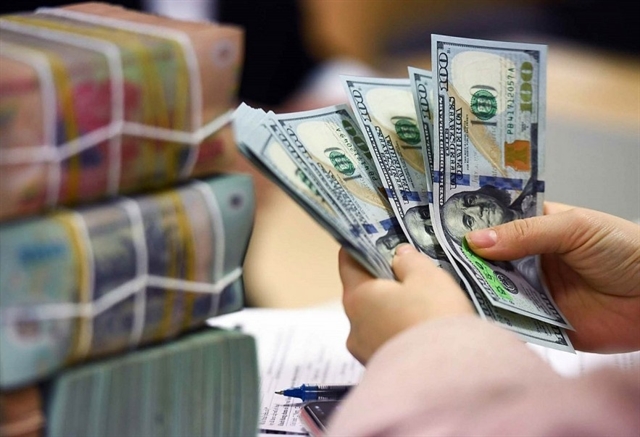 Economy
Economy

The budget deficit in the first half of the year hit VNĐ82.9 trillion (US$3.7 billion) due to rising recurrent expenditures and the repayment of debts, the General Statistics Office reported.
 |
| The budget deficit in the first half of the year hit VNĐ82.9 trillion (US$3.7 billion) due to rising recurrent expenditures and the repayment of debts. — Photo baodatviet.vn |
HÀ NỘI – The budget deficit in the first half of the year hit VNĐ82.9 trillion (US$3.7 billion) due to rising recurrent expenditures and the repayment of debts, the General Statistics Office reported.
Total budget revenue in the period reached VNĐ425.6 trillion, equal to 42 per cent of estimates. Of the total, domestic revenues (excluding oil revenues) contributed VNĐ342.8 trillion, oil revenues VNĐ17.7 trillion and revenue from export-import VNĐ63 trillion.
Budget spending, meanwhile, hit VNĐ508.5 trillion. The country spent VNĐ68 trillion on the repayment of debt and provision of aid. It also disbursed VNĐ74.5 trillion for development investment and VNĐ363.4 trillion for recurrent expenditures, including administrative governance and national defence.
Recurrent expenditures accounted for 65 per cent of the country’s total spending, up from 50 per cent last year, according to the Ministry of Planning and Investment.
Expenditures for development investment, meanwhile, dropped to 17 per cent from last year’s 30 per cent.
The Government planned to borrow VNĐ452 trillion this year through G-bonds and official development assissatance (ODA), of which VNĐ254 trillion will be used to offset the deficit.
Under the plan, estimates for debt payment this year are also expected to rise to VNĐ273 trillion from VNĐ148.3 trillion last year.
The Ministry of Finance forecast the deficit would reach 4.95 per cent of the GDP this year; however, international economic organisations have forecast a much higher rate.
HSBC predicts the budget deficit will rise to 6.6 per cent of the GDP in 2016, raising the ratio of public debt to GDP to a 64.5 per cent threshold due to the high public debt ratio and falling oil price.
The growing debt problem is aggravated by slowing inflation (affecting the nominal GDP) and Việt Nam’s currency devaluation (increasing the value of foreign debt).
The ratio of public debt to GDP increased from 59.6 per cent in 2014 to 63.3 per cent in 2015, and the World Bank forecast the ratio would rise to 63.8, 64.4 and 64.7 per cent in 2016, 2017 and 2018, respectively.
Experts have recommended that the Government stabilise recurrent spending and adopt tough measures to curtail spending and increase collection. — VNS


.jpg)






